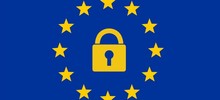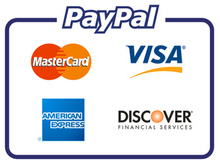Poll Shows Strategies Voters Favor to Restore Economy
The California Chamber of Commerce continues to advocate on behalf of California businesses during the Covid-19 lockdown in California.
By Loren Kaye, August 14, 2020
California voters are understandably anxious about the health and economic crises facing families and workplaces. The California Chamber of Commerce commissioned a brief survey to better understand how voters want state leaders to address key economic issues as the clock ticks down on the 2020 legislative session.
The chilling events over the past three months have moved California voters to a more pessimistic frame of mind.
Asked if the United States is going in the “right direction” or “wrong track,” voters chose wrong track by a more than 4 to 1 margin, 82%–18%, accelerating their jaded view of national affairs, which had trended 2 to 1 negatively over the past three years.
Voters also view California affairs pessimistically. By a 60%–40% margin, voters believe the state is on the wrong track, reversing the past three years’ assessment, which averaged a slight majority pegging the state in the right direction.
Voters are similarly bleak on the condition of race relations. A strong majority (58%) believe race relations are getting worse, with 27% answering they are staying about the same, and only 14% believing relations are getting better. Among the most pessimistic about the state of racial harmony were voters living in the Central Valley and Bay Area, low income, renters and political independents.
A slight corrective to this pessimism are attitudes on personal finances. Even in the midst of a historic economic downturn, voters report only a slight deterioration in their financial well-being. Less than a quarter of voters (22%) report being somewhat or much better off, while about half (49%) report their household finances are about the same, and 28% say they are somewhat or much worse off.
In late 2019, 31% of voters reported they were better off, 43% about the same, and 26% worse off.
Top Issues
Asked to identify the two most important issues facing California today, voters predictably chose COVID-19 and the economy. No other issues were even close, although homelessness and housing costs/availability carved a second tier position.
Notably, civil rights/racial equality/police brutality was a third-tier issue for all voters and most groups, but rose to a second-tier status among young voters and residents of the Inland Empire.
Mirroring national sentiment, a majority of California voters indicated that income inequality is a very important issue, but with an interesting take on policy solutions. A significant plurality (43%) and most demographic groups favored “offering public school alternatives for California children in disadvantaged communities so they have a better chance to get ahead in life.” The next-favored preference (39%) was to “reduce regulations on business so they will create jobs in California.” Least favored (18%) was to “raise taxes for programs to reduce income inequality.” The tax option trailed in every demographic; Democrats favored equally this option and reducing business regulations.
The Legislature is scheduled to adjourn its 2020 session in just over two weeks. Few of the bills left on its agenda will boost the economic recovery; many will hinder it. But the Legislature should know that voters, including most Democrats, are supportive of key strategies that would improve prospects for recovery and allow employers to maintain and expand their workforces.
Strategies Voters Favor
Top of the list is to adopt policies making it easier for businesses to allow employees to telecommute or work from home when possible. Obviously, this trend has accelerated throughout our economy, but many state regulations inhibit employers from spreading this practice throughout the workforce.
Half of voters indicated they were very favorable toward this policy, with another third somewhat favorable. Legislators would enjoy the gratitude of voters if they expanded their ability to telecommute, especially from the policy’s strongest supporters: women, low income, renters and Democrats.
Another overwhelmingly popular policy initiative is providing a shelter from litigation for businesses offering critical services, goods or facilities during the pandemic state of emergency. More than 7 in 10 voters (39% very favorable, 34% somewhat favorable) support quashing frivolous litigation from a customer claiming they contracted COVID-19 while on premises, while still preserving the ability to sue if the business was grossly negligent.
Sixty percent of voters favor accelerating the construction and permitting of new housing, a desperately needed economic boost that has been unaddressed for years.
Another 60% of voters also support pausing the creation of new nonessential regulations by state agencies, unless they are urgently needed to protect public health. State rulemakers have been resistant to reducing the yoke of regulation even as businesses have struggled to maintain their footing during the pandemic.
Voters also supported postponing for a year the automatic increase in the minimum wage. By a 2 to 1 margin (52%–26%), voters agreed that postponing the increase would encourage rehiring of unemployed workers and a quicker economic recovery.
Finally, voters also support resolving the employment status of thousands of workers employed by companies that contract with other businesses, such as an IT consulting firm that might contract with another business to upgrade a computer system. These workers are caught up in the dispute over the gig economy, even though they currently work for employers or have their own business.
A strong majority of voters agreed those workers should be removed from the uncertainty surrounding the new independent contractor law.
Even in their pessimistic frame of mind, voters are strongly supportive of affirmative efforts to improve California’s economic recovery. The Legislature and Governor should take note that the voters are unimpressed with business as usual and are looking for policies that will actually deliver more jobs and a sustainable economic recovery.
Pierrepont Consulting & Analytics (PCA) and Core Decision Analytics (CODA) conducted online interviews from July 24–27, 2020 among N=1,102 California likely 2020 general election voters. The overall margin of error for this study is +/- 2.95% at the 95% confidence level and larger for subgroups.
Source: https://calchamberalert.com/2020/08/14/poll-shows-strategies-voters-favor-to-restore-economy/




